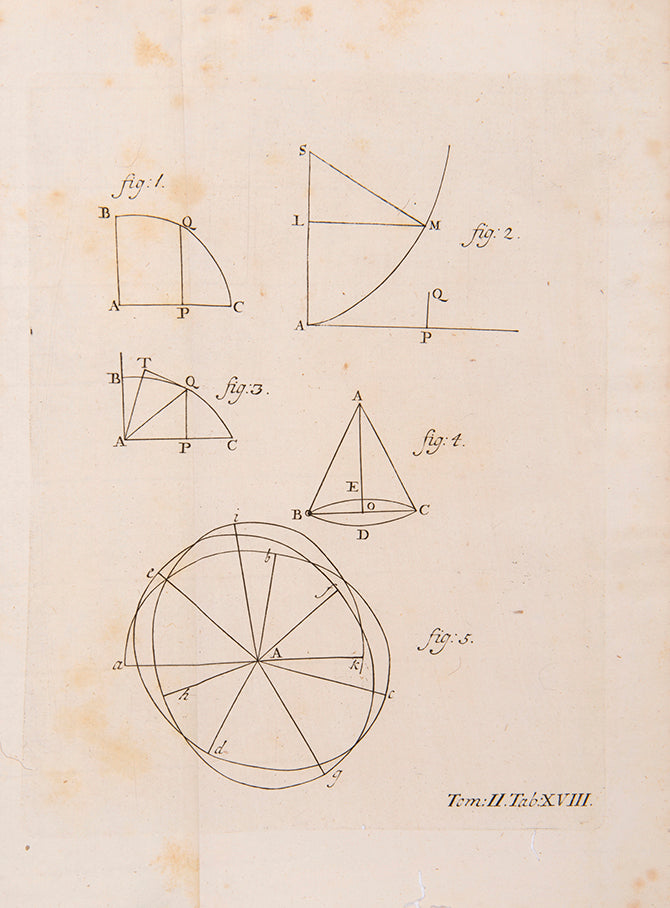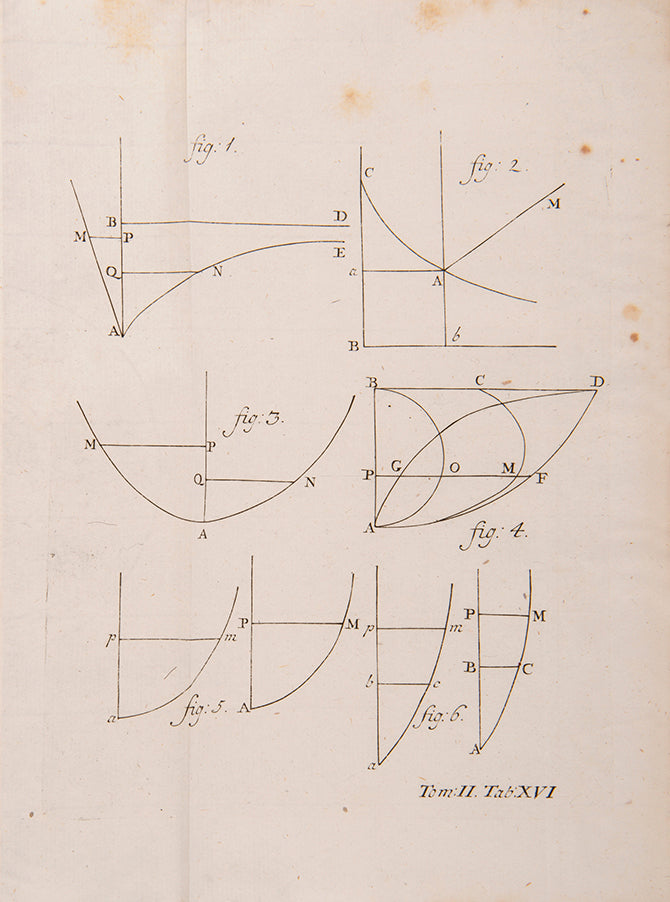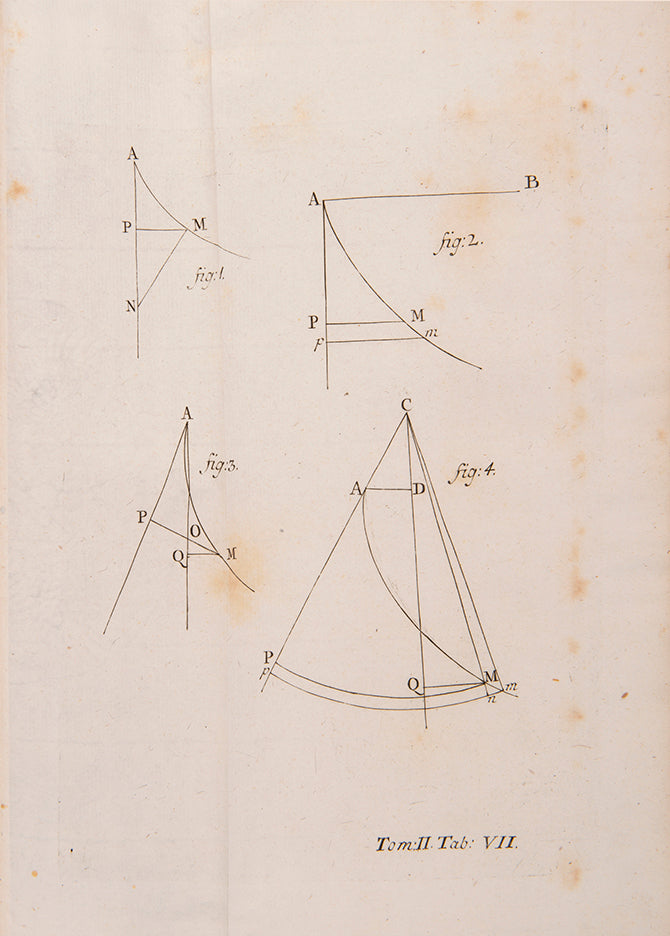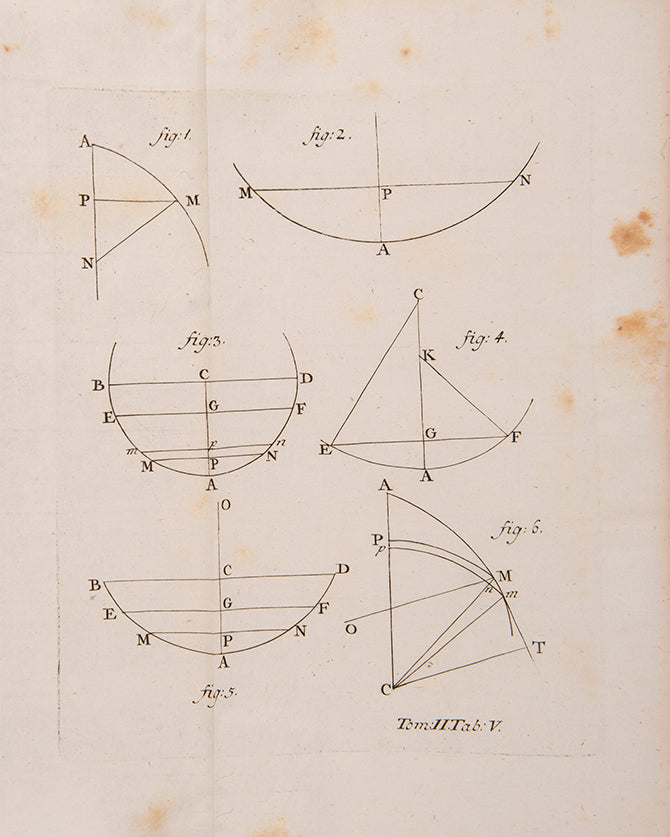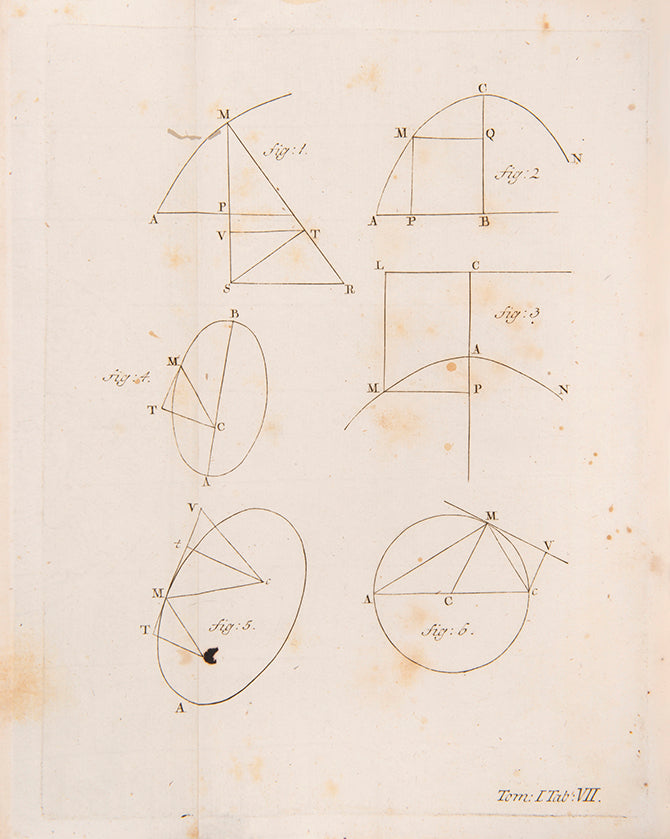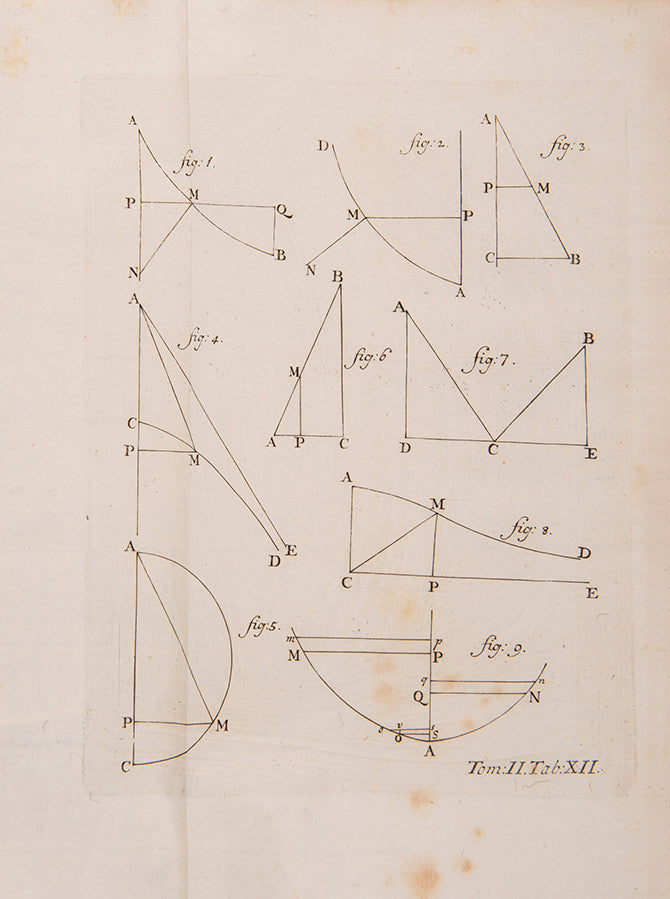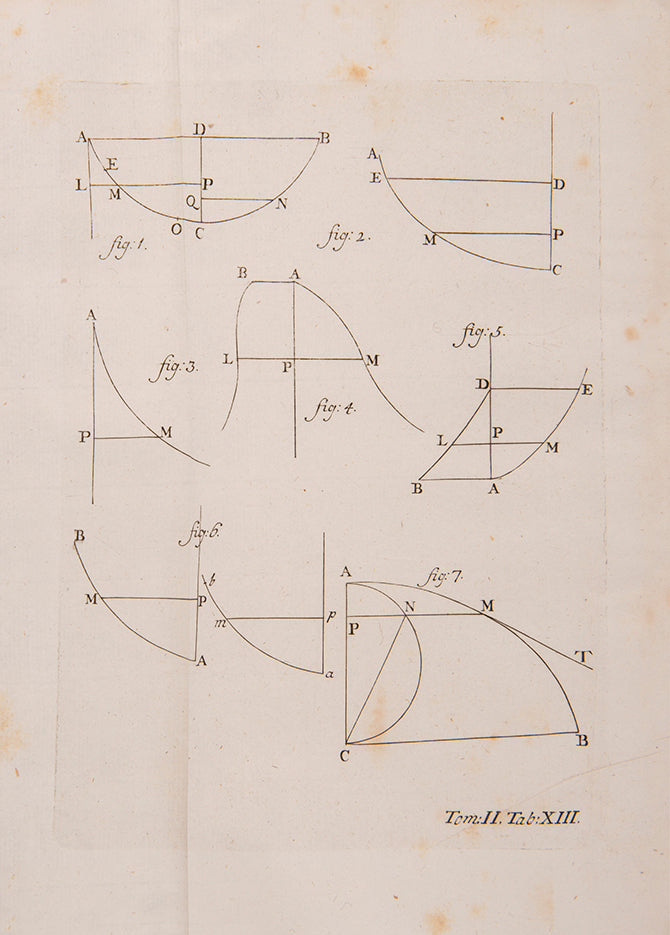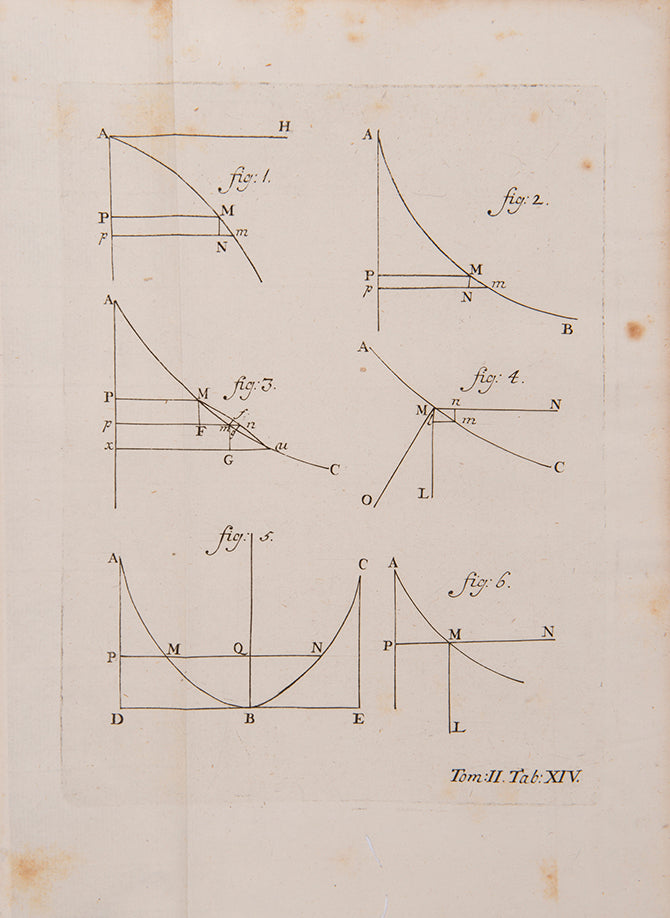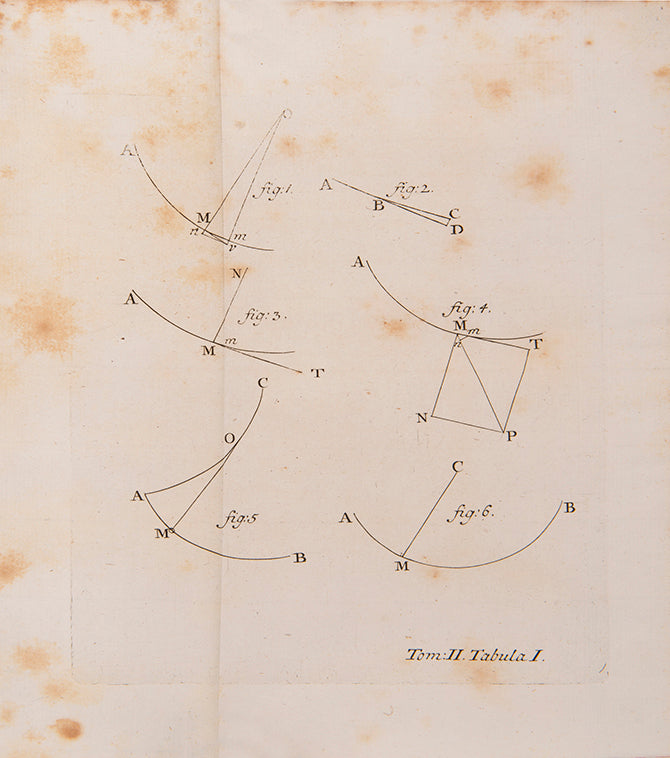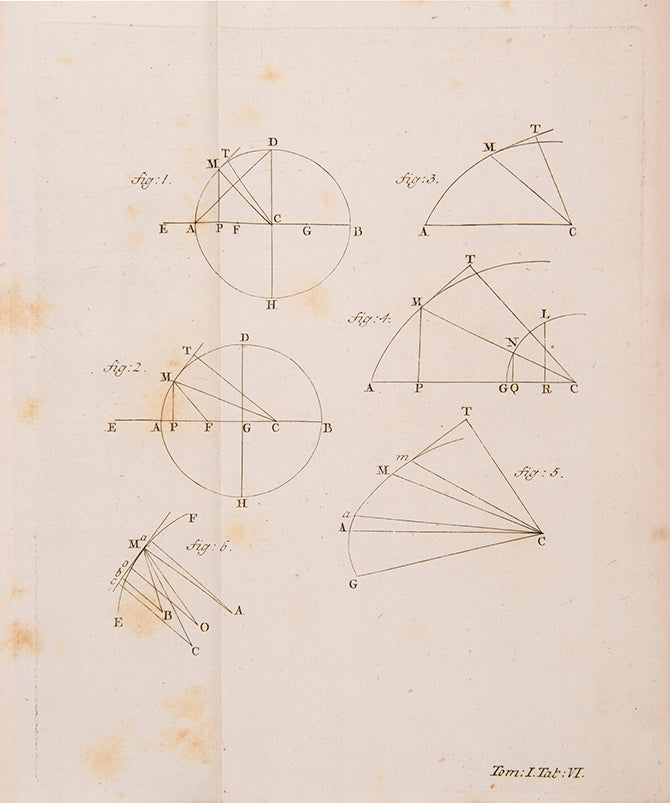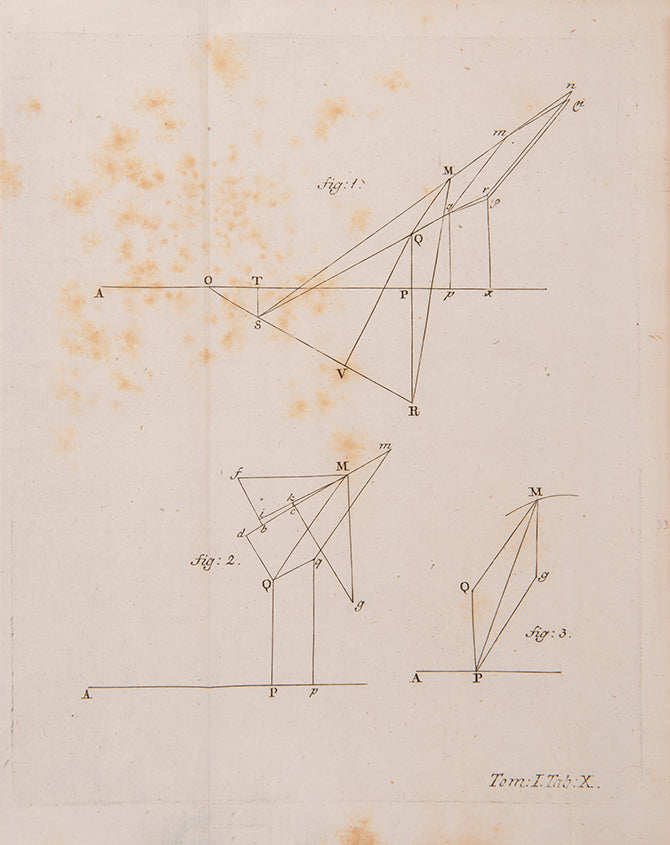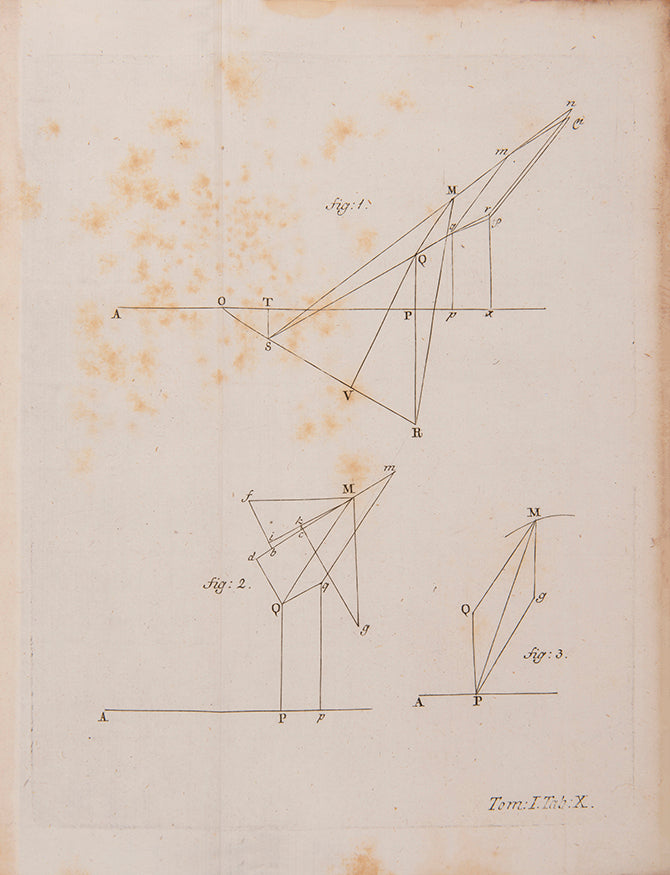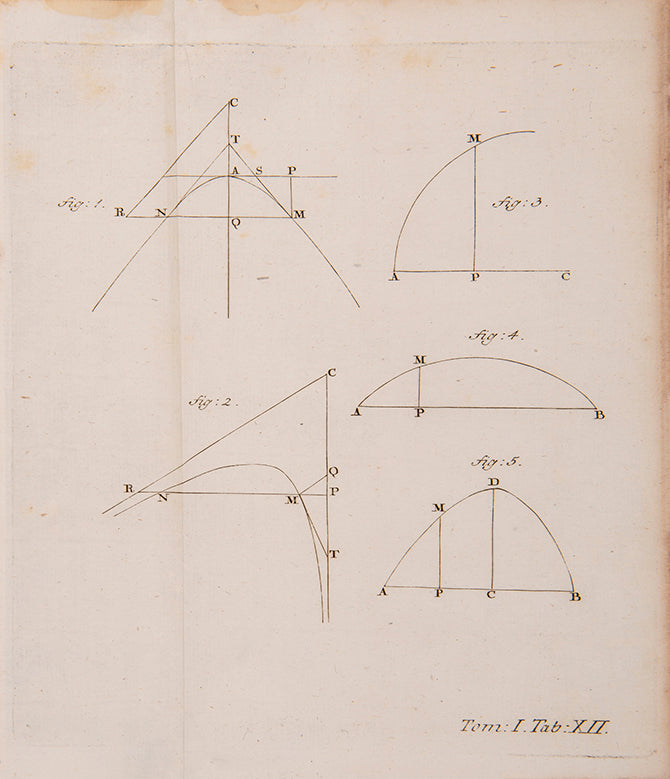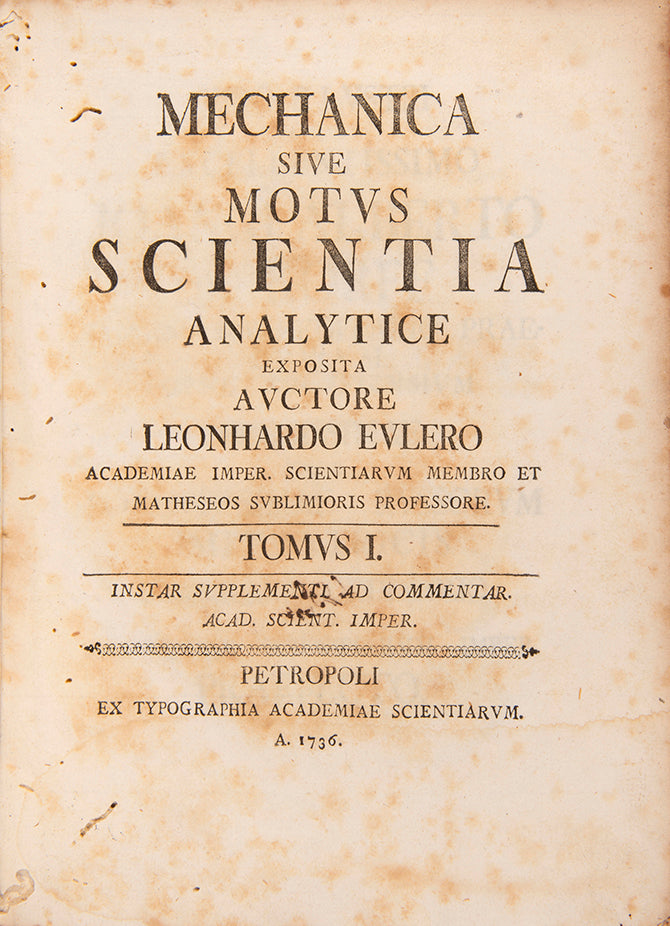EULER, Leonhard.
Mechanica sive motus scientia analytice exposita.
Mechanica sive motus scientia analytice exposita.
Stock Code 105571
St. Petersburg, Academy of Sciences, 1736.
introducing uniform analytic methods to the study of mechanics
First edition of 'Euler's famous work on mechanics in which he introduced the use of analytical methods instead of the geometrical methods of Newton and his followers' (Timoshenko, History of the Strength of Materials, p. 29).Mechanica won the praise of many leading scientists of the time: Johann Bernoulli said of the work that 'it does honour to Euler's genius and acumen', while Lagrange in his own Mécanique analytique acknowledged Euler's mechanics to be 'the first great work where Analysis has been applied to the science of motion'.
'In an introduction to the Mechanica Euler outlined a large program of studies embracing every branch of science. The distinguishing feature of Euler's investigations in mechanics as compared to those of his predecessors is the systematic and successful application of analysis. Previously the methods of mechanics had been mostly synthetic and geometrical; they demanded too individual an approach to separate problems. Euler was the first to appreciate the importance of introducing uniform analytic methods into mechanics, thus enabling the problems to be solved in a clear and direct way. Euler's concept is manifest in both the introduction and the very title of the book, Mechanica sive Motus Scientia analytice exposita. This first large work on mechanics was devoted to the kinematics and dynamics of a point-mass. The first volume deals with the free motion of a point-mass in a vacuum and in a resisting medium; the section on the motion of a point-mass under a force directed to a fixed center is a brilliant analytical reformulation of the corresponding section of Newton's Principia; it was sort of an introduction to Euler's further works on celestial mechanics. In the second volume, Euler studied the constrained motion of a point-mass; he obtained three equations of motion in space by projecting forces on the axis of a moving trihedral of a trajectory described by a moving point, i.e. on the tangent, binormal and principal normal. Motion in the plane is considered analogously. In the chapter on the motion of a point on a given surface, Euler solved a number of problems on the differential geometry of surfaces and of the theory of geodesics' (Dictionary of Scientific Biography).
First edition; 2 vols, 4to (27 x 20 cm); 32 engraved folding plates tipped-in on stubs, engraved head and tail pieces, previous owner's inscription on verso of title page, offsetting and spotting throughout, scattered worming particularly affecting the upper margins of Aaa2-Ccc in volume I and plates 14, 15, and 17 in volume II, old paper repair to Gg1 of volume I; contemporary vellum, titles to spine gilt, marbled edges, wormholes on upper and lower boards and spine of both volumes, boards a little rubbed and marked, a very good, wide-margined set; 500pp.
Couldn't load pickup availability
About us
About us
Shapero Rare Books is an internationally renowned dealer in antiquarian & rare books and works on paper.
Our Bookshop and Gallery can be found in the heart of Mayfair at 94 New Bond Street, where most of our stock is available to view and on public display.
We exhibit at major international art fairs, including TEFAF (Maastricht and New York), Frieze Masters, Art Miami and Masterpiece London, as well as antiquarian & rare book fairs including New York, Paris, London, Los Angeles, San Francisco and Hong Kong.




